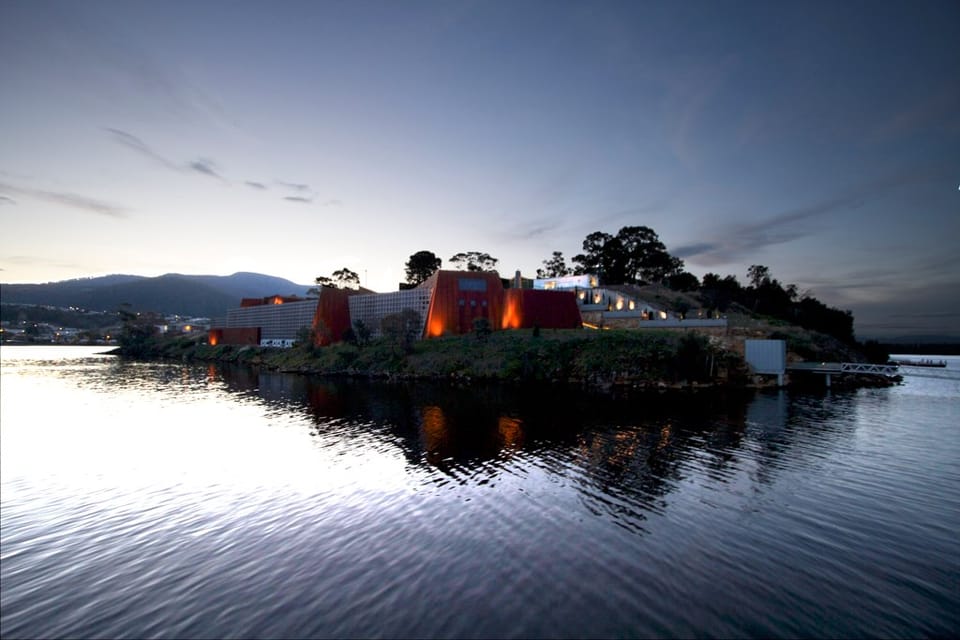Friday Inspo: MONA meanderings

I'm always really inspired by work at the intersection of art and tech, which is in a way why MONA is one of my favourite places to visit. I like to be provoked and to think in ways I hadn't considered before. This week I have a little collection of things that did that for me. I'd love a day at MONA, so if you get the chance, go!
1. Refik Anadol’s AI Art Museum “Dataland”
Istanbul-born artist Refik Anadol is pioneering an AI art museum named Dataland in Los Angeles. Designed by Frank Gehry, the museum will feature “living” digital sculptures derived from vast datasets, including 3D scans of the Amazon rainforest and millions of images of flora and fauna. Anadol’s work emphasizes immersive experiences, with digital art reacting to movement and incorporating sound and scent. This initiative exemplifies the fusion of AI technology with environmental data to create art that raises awareness about climate change.
2. Björk’s “Nature Manifesto” Sound Installation
Renowned musician Björk has collaborated with French artist Aleph Molinari to create an immersive AI-powered sound installation titled “Nature Manifesto”. Exhibited at Paris’ Centre Pompidou from November 20 to December 9, the installation recreates the calls of extinct and endangered animals, integrating Björk’s music and voice. Developed with the French sound research institute IRCAM, the project aims to evoke the presence and vitality of these creatures within an industrial setting, fostering a deeper understanding of humanity’s impact on biodiversity and the climate crisis.
3. “Made in the Middle”
The “Made in the Middle” exhibition at Leicester Gallery, De Montfort University, running until March 22, showcases 37 artists across various media, highlighting the sophisticated craftsmanship of the Midlands. This event underscores the region’s rich industrial heritage and its ongoing contributions to art and design, reflecting on sustainable practices and the role of traditional crafts in contemporary discussions about climate and technology.

4. UKRI’s Responsible AI Projects
The UK Research and Innovation (UKRI) has announced funding for projects investigating how responsible AI tools can create more opportunities in the creative sector and build environmental resilience. These initiatives aim to harness AI’s potential to address climate challenges through innovative design and artistic expression, fostering a collaborative approach to sustainability.
5. MIT’s Exploration of Generative AI’s Climate Impact
MIT’s Vijay Gadepally discusses the increasing use of generative AI in everyday tools, its hidden environmental impact, and ways to reduce emissions for a greener future. This exploration highlights the importance of considering the environmental footprint of AI technologies and encourages the development of sustainable practices in AI-driven art and design projects.
Each time a model is used, perhaps by an individual asking ChatGPT to summarize an email, the computing hardware that performs those operations consumes energy. Researchers have estimated that a ChatGPT query consumes about five times more electricity than a simple web search.
“But an everyday user doesn’t think too much about that,” says Bashir. “The ease-of-use of generative AI interfaces and the lack of information about the environmental impacts of my actions means that, as a user, I don’t have much incentive to cut back on my use of generative AI.”
Human prompt
Spend 10 minutes brainstorming a product, service, or system that leverages AI to promote sustainability, reduce carbon footprint, or improve climate resilience.
The point of it is not to produce a working solution, rather to stretch yourself in a different direction and discover how much you have in the tank already in this area.
